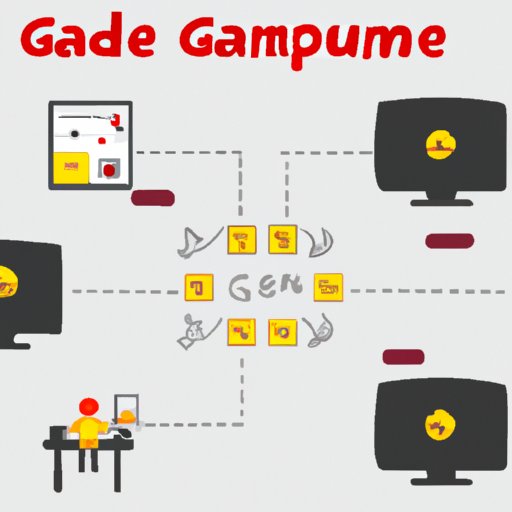
I. Introduction
Do you dream of creating your own video game? If you’re just getting started, the process of coding a game can be daunting. But fear not, this article will guide you through the essential steps of game development. From programming basics to choosing the right game engine, designing the game architecture, implementing game mechanics, and testing and debugging your game, this guide will cover everything you need to know to get started with coding your very own game.
II. Start with the basics
Before coding a game, you need to understand some fundamental programming concepts like logic and algorithms. Programming concepts deal with problem-solving and any game development requires you to solve a lot of problems. Resources such as Codeacademy, Udemy, and W3Schools, offer informative interactive tutorials and exercises. In a short time, you will learn the basics of programming logic and algorithms and be ready to start learning game development.
III. Choose the right game engine
The game engine is the core software that game creators use to build games. It provides a common software framework, software tools, and libraries that are used to build games. There are numerous options for game engines, each with its strengths and limitations.
Some of the popular game engines are:
- Unity: Supports both 2D and 3D game development and has great support for cross-platform development
- Unreal Engine: Suitable for complex projects with high-end graphics
- Godot: Provides an extensive set of tools for both 2D and 3D game development, and is entirely free and open source
Choose the game engine that you are most comfortable with based on how it would serve your game idea and your level of expertise in programming.
IV. Design the game architecture
The game architecture is the system design used to organize the various components of a game; it is the framework to make everything in the game work together efficiently. A game architecture should be well-structured and easily scaled when game development becomes more complicated. An efficient way to approach game architecture is to use a modular design. A modular design enables game developers to break down large, complex code into smaller, more manageable parts. This allows game developers to either overhaul each component individually without causing problems elsewhere or add new components at a later stage without disrupting the existing codebase.
V. Implement game mechanics
To make a great game, it’s not enough to have excellent graphics and sound effects. Game developers must create engaging gameplay that will keep gamers interested and invested in their project. The game mechanics are the interactive systems and rules that determine how the game is played.
The type of game determines the game mechanics that will be required. Game mechanics like physics engines, user interfaces, and artificial intelligence modules can be set up easily using the game engine framework or libraries. Start by building out simple mechanics, like character movement, then gradually begin adding more complexity.
VI. Use libraries and frameworks
Game developers often work with frameworks and libraries to make development more efficient. These are scripts or code that can be imported into your software to execute generic functions. Libraries and frameworks can simplify complex programming logic, reduce the amount of code needed to accomplish something, and provide reusable and tested code that doesn’t need to be re-implemented each time you start a new game project.
Here are some popular libraries and frameworks to use:
- Pygame: A Python library with tools and basic utilities that simplify writing Python code while creating video games
- XNA/Monogame: Game development frameworks that make use of the C# programming language
- Three.js: A JavaScript library for creating 3D graphics that could lead to game development in certain instances
When choosing libraries and frameworks, choose those suitable for the game design and take into consideration the language the game will be written in.
VII. Test and debug your game
Testing and debugging are critical parts of game development. It ensures that the game works the way we want it to and debugs any issues that may arise. Game development contains integral loops that make game development and testing more manageable. You should always start by testing your code even at the very beginning.
To test a game, code various scenarios to verify game mechanics and gameplay. Running these simulations can help in identifying and debugging issues.
VIII. Consider publishing and marketing strategy
Publishing and marketing are essential for any successful video game. You have to publish the game on a platform for it to reach a large audience while also marketing it effectively. There are numerous publishing platforms, such as Steam or the App Store.
In addition to publishing the game, you should develop a marketing plan that can be executed on various channels such as social media to consistently attract players to your game. Plan on developing trailers, teasers, and sneak peeks of the game to give a glimpse of what it offers to potential players.
IX. Conclusion
Coding your own game is one of the most fulfilling experiences a developer can have. The process may seem overwhelming, but by following these steps, you will have a game that is fun and enjoyable, even if it’s a simple game. Starting from the basics, choosing the right game engine, designing the game architecture, implementing game mechanics, testing and debugging your game, to publishing, and marketing, we have covered the essential steps of game development.





